#endangered shark
Explore tagged Tumblr posts
Text
🦈 Daily Shark Fact: 🦈
Speartooth Sharks are a rare species of river shark, one of the rarest animals on earth actually. Scientists estimate that only around 200 of these interesting sharks, are left in the world.

#speartooth shark#small shark#small boi#rare shark#endangered marine life#endangered species#endangered shark#shark blog#advocacy for sharks#respect the locals#shark awareness#save the sharks#sharks#cartilaginous fish#shark facts#daily shark facts#facts about sharks#shark post#sharks of tumblr#shark tumblr#the more you know#fyp#just a girl who loves sharks
137 notes
·
View notes
Note
I'd love some lemon shark facts 💛

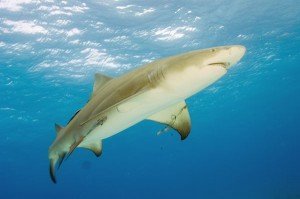
Lemon Shark or Negaprion brevirostris
They get their name from their yellowish brown coloring. Lemon sharks, unlike the lone-shark stereotype, enjoy hanging out in groups! They even have preferred individuals to hang out with!

Lemon sharks are also one of the most well-understood shark species and this is because they do well in captivity. Additionally, most of our knowledge of shark physiology and biology stems from studies of lemon sharks!
Unfortunately, this species is nearly threatened; this is mostly due to overfishing. They're not only caught as bycatch, but are a target for some fisheries. Their meat, skin, and squalene are used for human consumption. It's estimated that between 70-90% of shark squalene harvested each year is used in cosmetics. (Make sure to do your research before buying makeup). To harvest the amount of squalene used for our consumption, almost 3 million sharks are killed every year. But there's a great new alternative source that's gaining traction: olives!
#biology#animal facts#wildlife#marine life#animals#science#marine ecology#marine biology#ocean#fun facts#shark#sharks#shark facts#lemon shark#lemon sharks#fish#conservation#endangered species#ecology#wildlife conservation#ecosystems#sea life#seas#sea creatures#sea animals#marine animals
246 notes
·
View notes
Text
[Warning: Graphic (some very graphic) shark-fishing pictures at the link.]
"Suhardi isn’t your average snorkeling guide. Born on the Indonesian island of Lombok, he’s spent his life on water. While he now seeks out sharks for the enjoyment of tourists, he once hunted sharks to help earn money to feed his family and educate his two children.
Suhardi was a fisherman for more than 20 years. He first started fishing working on his parents’ boat, but was then asked to join the crew of a shark boat where he was told he could earn a lot of money. Back on deck, he looks embarrassed to divulge what a meager wage it was, but finally confesses he earned around $50 for up to a month at sea.
Now he and 12 other former shark fishermen are part of The Dorsal Effect, an ecotourism company that helps ex-shark hunters find a new vocation. Each week, the team takes groups of tourists, schoolchildren and university students to off-the-grid locations and guides them around pristine reefs. Each trip is designed to take guests on an exploratory journey of both the shark trade and marine conservation through the eyes of the Sasak people of Lombok.
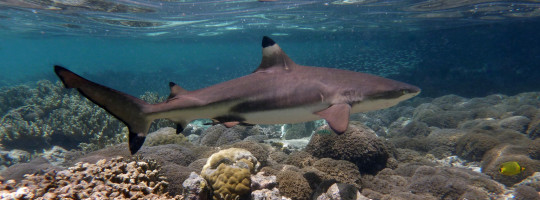
Lombok is a hotspot for marine diversity, sitting just east of the Wallace Line, a biogeographical boundary separating Asia and Australia and their respective fauna. Pristine coral gardens and around 80 species of sharks can be found in its waters. The island is also part of the world’s largest shark-fishing nation. Only the whale shark (Rhincondon typus) is protected in Indonesia; all other sharks can be legally caught.
The Dorsal Effect first launched in 2013, a year after Suhardi met Singaporean ecologist Kathy Xu, who had traveled to Lombok to find out more about the shark trade. The diminutive but quietly determined Xu wanted to protect sharks, but because she knew shark fishing was poorly paid and dangerous, she wanted to hear the fishermen’s stories too. They told her how once they could fish for sharks close to shore, but now with the shark population dropping, the fishermen said they needed to travel farther out to sea, only to come home with a relatively poor catch. The reduced catch also meant reduced pay, so they often couldn’t cover their costs...
Yet, when Xu asked why fishers didn’t seek out another trade, she learned they didn’t want to be separated from the sea. They saw it as part of their heritage.
But as they spoke longer, the shark fishermen talked about the coral gardens that could be found under the waves, ones that only they knew about. Inspired by a whale shark diving trip she’d taken with scientists on the Great Barrier Reef, Xu had an idea. “If such spots exist,” she recalls telling the fishers, “I could take tourists out with you and pay you more than you earned shark fishing”.
At first, Xu guided the former shark fishermen on how to become eco-friendly tour operators. They dropped anchor away from the reef, served guests plant-based dishes, and made sure all trash was taken back to shore. But then Xu saw that something special was happening: The former fishermen had started to take the guest experience into their own hands, making sure tourists felt at home. Suhardi painted “Welcome” in large letters over the front of his boat, fitted green baize to the top deck for outdoor seating, and hung curtains in the cabin so his guests could enjoy some shade.
Suhardi has already bought a new boat with his earnings from snorkeling trips. “Every day is my best day,” laughs Suhardi, whose smile always travels from his mouth to his eyes.
While they were receiving tourists from across the globe, there was another group that Xu wanted to reach out to. “I think it was the teacher in me who felt impassioned about influencing the young,” she says. She reached out to schools and created a five-day program that would help students understand the shark trade and local conservation efforts. During the program, paid for by the school and students, participants would not only meet the ex-shark fishermen so they could ask them about their lives, but also hear from NGOs such as the Wildlife Conservation Society about their efforts to slow the trade. The Dorsal Effect also hired marine biologists to host nightly lectures and help the students with their field surveys...
The students were faced with the realities of the fishing trade, but they were also encouraged to take a balanced view by The Dorsal Effect team. The villagers weren’t just taking the fins, and throwing away the rest of the shark; they processed every piece of the animal. While they did sell the meat and fins to buyers at the market, they also sold the teeth to jewelers, and the remains for pet food.
The Dorsal Effect also takes students on an excursion to the fishermen’s village, a small island that lies off the coast of Lombok. Marine biologist Bryan Ng Sai Lin, who was hired by The Dorsal Effect team, says that on one trip with students he was surprised by how quickly the young people understood the situation. “One of them said it’s good to think about conservation, but at the same time these people don’t really have any other choice,” Lin says....
Conservation scientist Hollie Booth of Save Our Seas, which does not work directly with The Dorsal Effect, says the need to provide legal profitable alternatives to shark fishing is critical: “We are never going to solve biodiversity and environment issues unless we think about incentives and take local people’s needs into account. These kinds of programs are really important.”"
-via Mongabay, December 15, 2023
#shark#sharks#fish#marine biology#marine animals#sea creatures#fishing#marine life#marine conservation#endangered species#overfishing#indonesia#lombok#school#field trip#ocean#pacific ocean#biodiversity#conservation#environmentalism#fishermen#scuba#scubadiving#underwater#diving#coral reef#ocean life#good news#hope
700 notes
·
View notes
Text
" Stegostoma fasciatum " // © Jacinta Shackleton
#Great Barrier Reef#Queensland#Australia#nature#Marine Life#Leopard Sharks#Fish#Sharks#Endangered#Species#reels#photography#aesthetics#wanderlust#explore#follow#discover
85 notes
·
View notes
Text
Daily fish fact #849
Elasmobranch fish!
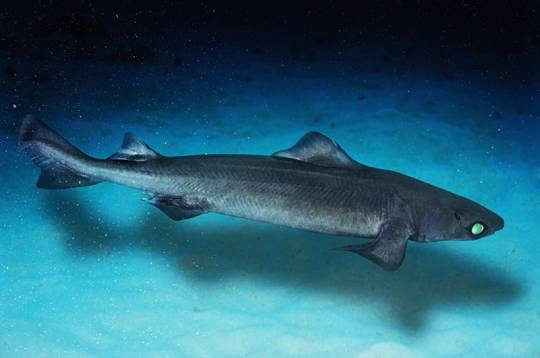
Fish of the subclass Elasmobranchii, like sharks and rays, have a large liver full of low density oils — they use this liver to maintain their buoyancy in the water column! The liver can be so large as to be up to 25% of the fish’s body weight.
#pictured is the gulper shark which is hunted for its liver oil. they are very endangered due to this#fish#fishfact#fish facts#fishblr#biology#zoology#sharks#shark#ray#rays#skate#skate fish#elasmobranch#elasmobranchii
68 notes
·
View notes
Text
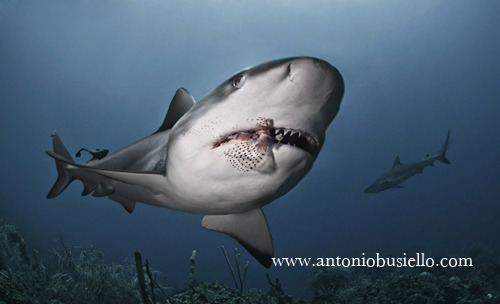
Usually, sharks don't have much interest in lionfish--this is due partially to their venomous spines, but also to the fact that the sharks don't recognize the nonnative fish as prey. The lack of predation by native predators like sharks is part of what makes lionfish such a damaging invasive species.
However, sharks became more interested after spearfishermen working to cull invasive lionfish started feeding the fish they were killing to nearby sharks. After receiving many lionfish "handouts", the fishermen observed sharks hunting and eating lionfish on their own.
This spurs hope that sharks could be "taught" to view lionfish as a viable source of food and contribute to limiting their numbers.
#cw animal death#shark#marine conservation#reef conservation#biodiversity#endangered species#invasive species#lionfish#fishing#good news#hope#environment
496 notes
·
View notes
Text
#good news#science#environmentalism#nature#environment#animals#conservation#shark#sharks#zebra shark#endangered animals#endangered species
181 notes
·
View notes
Text

Heavily inspired by this post.
Your fear/disgust for an animal does not determine it's worth. All animals exist for a reason.
#individuals that actively endanger human lives dont count in this situation#i understand hunting down a oredator that is threatening your loved ones and livelihood. a lone shark thats#never had contact with humans is a different story.#not mentioned but this goes for vegans who think no animal needs meat to survive. dont be responsible for animals ever.#sharks#predators#animal welfare#bears#large cats#wolf#fox#coyote#hyena#etc etc sorry i can't tag everything
731 notes
·
View notes
Text
youtube
Along the coast of Gujarat, India, a renowned spiritual leader is inspiring fishermen to become guardians of the world’s biggest fish: the endangered whale shark.
When the fishing community here saw their traditional stocks decline, they began to target whale sharks as a new source of meat and valuable oil. The high demand for these products in Asian markets made the sharks lucrative to hunt, and contributed to a steep decline in their numbers. In just 75 years, the worldwide population of whale sharks was cut in half.
In response, the Indian government added legal protections, although the new laws were a challenge to enforce and poaching continued when fishermen encountered these gentle giants out at sea. The Wildlife Trust of India then launched an awareness campaign to teach the community about the sharks and show how to save them if they became trapped in their nets — but by far the biggest shift began when spiritual leader Morari Bapu joined the campaign and spread the message that the whale sharks were like daughters returning home to give birth. His voice led to a change of heart in the local community, and has helped finally turn the community of fishers into a growing army of whale shark conservationists.
#Nature on PBS#wild hope#solarpunk#tidalpunk#india#Gujarat#Morari Bapu#whale shark#shark#endangered species#ocean#sea#marine life#fishing#fishing village#fishing community#Wildlife Trust of India#Youtube#Asia
27 notes
·
View notes
Text
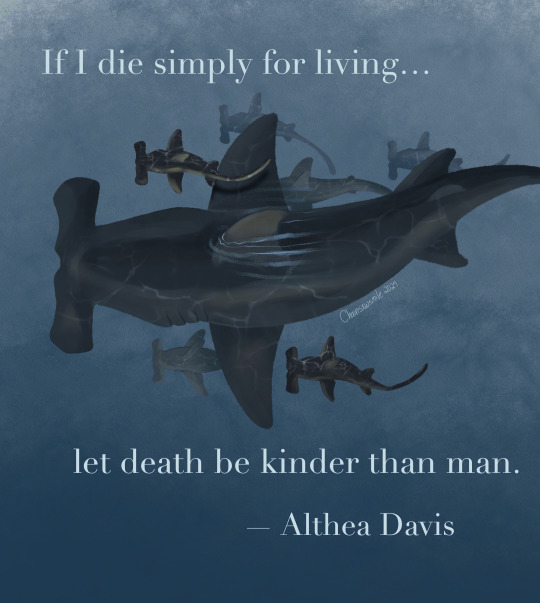
In his latest atrocity against conservation, Mark ‘the Shark’ Quartiano therealmarktheshark and equestrian.maxi ki!!ed and butchered a pregnant endangered Great Hammerhead (Sphyrna mokarran).
They posed with her body before tearing out the de@d fetuses and posing with them too.
Even though Great Hammerheads are protected in Florida state waters, Quartiano treats each offense like a parking ticket. He boasts about having ki!!ed over 10k sharks in his lifetime.
@noaa @noaafisheries need to do a better job at defending imperiled shark populations and repossess Quartiano’s fishing license. Someone needs to hold him accountable.
#my art#sharks#the world would be kinder without people like him#shark#shark conservation#animal abuse#animal cruelty#great hammerhead#endangered species#outofkelp
47 notes
·
View notes
Text

Been watching a lot of shark documentaries lately, which made me want to sketch some endangered shark species. My bic pen wasn't the most cooperative thing during these sketches; i think it's because it's well over 10 years old lol. I've got some new ones coming, though, because I've been enjoying sketching in the ballpoint.
Art tag: @lathalea @sotwk @ilovedainironfoot @estethell
If you would like to be added to my tag list, please let me know~!
#art#moosie's art#artists on tumblr#traditional art#sharks#endangered sharks#ballpoint pen#ballpoint pen art#ballpoint pen sketches#sketch#drawing#doodle#sketchbook#drawing practice#animals#animal art#shark art#scalloped hammerhead#australian angelshark#whitetip reef shark#blue shark
40 notes
·
View notes
Text

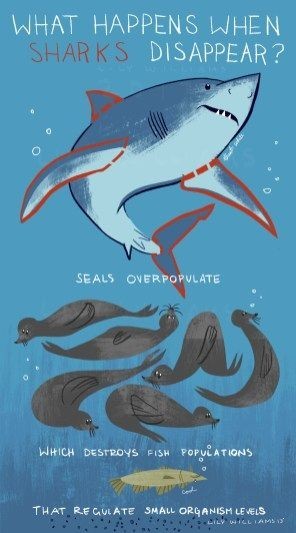
-- "Two distinct population segments of the Scalloped Hammerhead Shark are listed as endangered and two are listed as threatened under the Endangered Species Act (ESA). NOAA Fisheries is committed to conserving and protecting scalloped hammerhead sharks."
-- "Great White Sharks are decreasing in numbers and are rare due to years of being hunted by man for fins and teeth, and often as a trophy for sport fishing. The white shark is often caught as bycatch by commercial fisheries and can also become entangled in meshes that protect beaches."
#save the sharks#shark awareness#shark conservation#advocacy for sharks#respect the locals#shark blog#shark post#sharks#protect the sharks#protect the ocean#sharks are important#sharks are friends not foes#scalloped hammerhead#great white shark#endangered species#endangered marine life#vulnerable species
144 notes
·
View notes
Text
"Mexico’s government recently announced the creation of 20 new protected areas across 12 states and two coastal areas in the country, covering roughly 2.3 million hectares (5.7 million acres). This follows a series of budget cuts to the nation’s environmental agencies.
Officials introduced four new national parks, four “flora and fauna protection areas,” seven sanctuaries, two biosphere reserves and three “natural resources protection areas” under the protection of the National Commission of Protected Natural Areas (CONANP).
“This is a commendable step toward biodiversity conservation and environmental protection,” said Gina Chacón, director of the Wildland Network’s public policy program in Mexico. She told Mongabay these new areas will help preserve the country’s rich ecosystems, foster sustainable practices and protect a broad range of important species and habitats. Though some environmental and Indigenous groups are wary the budget cuts could hinder efforts to conserve these areas.
The newly protected areas will preserve habitat and ecologically important marine areas for various species, including whale sharks (Rhincodon typus), Mexican prairie dogs (Cynomys mexicanus) and jaguars (Panthera onca). They will also help safeguard ecologically important coral reefs and areas of cultural significance to Indigenous communities.
Bajos del Norte, a new national park in the Gulf of Mexico, is the largest new protected area, covering 1,304,114 hectares (3,222,535 acres), almost nine times the size of Mexico City. The area is important to the more than 3,000 families that belong to fishing communities on the Yucatán coast. It is also one of the main grouper fish (Epinephelinae) reproduction sites in the Gulf of Mexico and will safeguard threatened species, such as the rocky star coral (Orbicella annularis) and the hawksbill turtle (Eretmochelys imbricata).
Joaquín Núñez Medrano, the secretary of the UEFAHG or Union of Forestry and Agricultural Ejidos Hermenegildo Galeana A.C. (Unión de Ejidos Forestales y Agropecuarios Hermenegildo Galeana), lives in an ejido — a type of communally owned land used for agriculture and forestry purposes — called Cordòn Grande in Sierra Grande of Guerrero, along the Pacific Coast. For more than 10 years, Medrano’s community has monitored species such as the jaguar and sustainably managed the ejido’s natural resources, without government assistance.
But now, the ejido has been designated a protected area in this latest round of decrees, as it falls inside part of the new Sierra Tecuani reserve. “The goal is to strengthen what we have already been doing but with support to do it much better,” he told Mongabay.
The second- and third-largest newly protected areas are Sierra Tecuani, a 348,140-hectare (860,272-acre) biosphere reserve threatened by illegal logging, forest fires and land use changes, and the Semidesierto Zacatecas Flora and Fauna Protection Area, which is important for the recovery of the Mexican prairie dog.
The state of Oaxaca is where the government created the most new protected areas, numbering three: the 90-hectare (222-acre) Playa Morro Ayuta Sanctuary, the 56-hectare (138-acre) Barra de la Cruz-Playa Grande Sanctuary and the 261-hectare (645-acre) Playa Cahuitán Sanctuary. Other protected areas were created in the states of Quintana Roo, Veracruz, Campeche, Nayarit, Zacatecas, Chiapas, Colima, Durango, Jalisco, Chihuahua, Guerrero and the State of Mexico...
President Andrés Manuel López Obrador has protected more areas than any previous administration, with a total of 43 new areas across 3 million hectares (7.4 million acres). But Mexico’s Secretariat of Environment and Natural Resources (SEMARNAT), which works to safeguard the environment, has become severely cash-strapped throughout his six-year term.
SEMARNAT is one of many sectors in Mexico undergoing funding cuts. In recent years, Obrador’s government has implemented a series of strict austerity measures to free up more money for other areas like pensions and wages, boosting the leader’s popularity among citizens, particularly the working-class. Judicial workers, health services and academia have also had their budgets slashed in 2024...
Juan Bezaury-Creel, the director of the organization Fundación BD BioDiversidad Mexicana, said a protected area is better than no protected area because, once a decree is formalized, the government has a duty to protect it. However, this puts “huge pressure on existing personnel because they have to take care of more surface area with less resources,” he told Mongabay.
“The personnel from CONANP are heroic,” he said. “They are putting their lives on the line many times with little budget and little help.”"
-via Mongabay, January 25, 2024
#mexico#lopez obrador#andrés manuel lópez obrador#protected areas#environment#deforestation#environmental issues#national park#gulf of mexico#yucatán#oaxaca#endangered species#good news#hope#whale shark#prairie dog#jaguar
338 notes
·
View notes
Text
🦈Shark Of The Week!🦈
today's shark of the week is,,
the zebra shark! (stegostoma tigrinum)
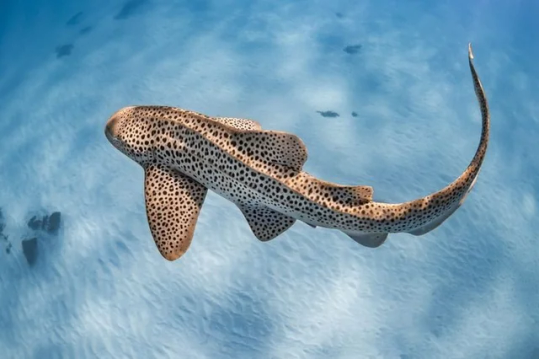
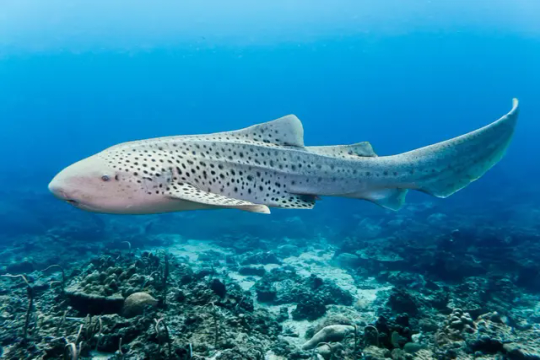
despite being called a zebra, this shark is unfortunately not voiced by chris rock, nor does it really resemble a zebra (in adulthood)
Physical Attributes:
female and male zebra sharks both tend to average around 6 - 8ft (1.9 - 2.5m) though very rarely they can grow up to 11 ft (3.5m)
they average around 45-65 lb (20-30 kg) in weight and can live around 25-30 years
zebra sharks are oviparous, meaning they lay eggs instead of giving birth to their young live
they lay around 1-4 eggs at a time, and can produce these eggs asexually! (meaning no opposite sex partner is required for them to reproduce) although its rare for a zebra shark to do so
the zebra shark gets their name from their appearance as youth, with much darker colouration ranging from dark brown to black, all while sporting a lovely white stripe-spot combo! (much like real zebras, they are black with white stripes) baby zebra sharks pictured below! although they lose this lovely look as they get older and turn into the leopardy tan with black freckling spots as we know them
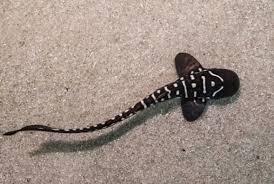
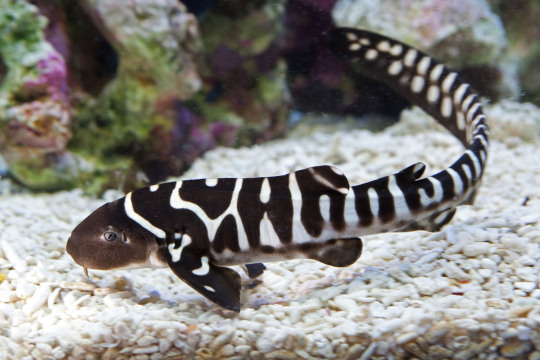
Personality:
a docile shark, the zebra shark is a peaceful and gentle solitary creature that often keeps to itself. but aggregations of zebra sharks have been observed and usually consist of females as the majority, its purpose as to why they group like this is unknown
they pose no inherent threat to humans and are perfectly safe to respectfully approach, they have bitten people before although as long as you are not harassing or bothering the shark you'll be fine. remember to look not touch! they can and will bite you.
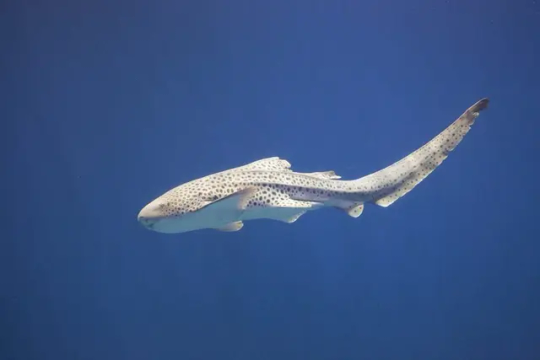

Diet and Hunting:
zebra sharks are nocturnal hunters and utilize their strong jaws especially evolved for cracking open the hard shells that some of the prey the shark hunts has
their diet consists of crustaceans, mollusks and other small miscellaneous fish
they've been seen using the flexibility of their body to get into small crevices in order to hunt certain prey
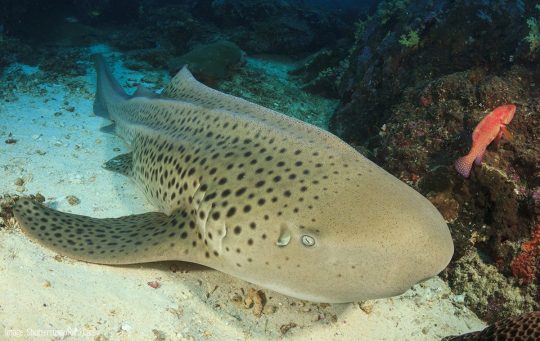
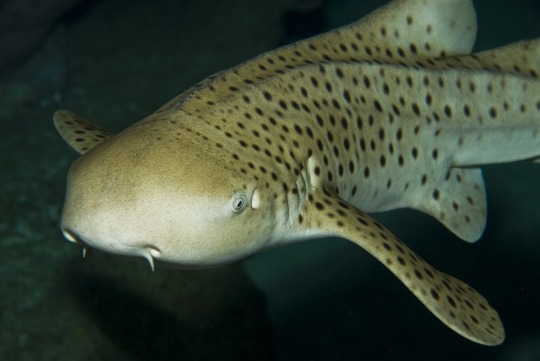
Other Facts:
a zebra sharks tail is nearly as long as the shark itself!
they are able to breathe using their spiracle (an opening behind their eyes that lead to their gills) and turn to face towards currents in the water in order to breathe without needing to move unlike some other shark species!

due to being nocturnal, most if not all of their day is spent idle and resting on the ocean floor
the zebra shark is endangered largely due to fishing
they inhabit the western pacific ocean, red sea and Indian ocean
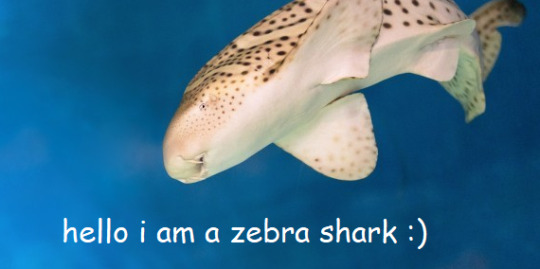
#sharkoftheweek#zebra shark#shark#sharks#sharkposting#edit: fixed accidental repeat on the endangered fact oops#knew i should've combed through for errors after rearranging all the photos. curse you tumblr duplicates lol
26 notes
·
View notes
Note
I am Imtithal from northern Gaza. I live in very difficult conditions because of the war and I struggle to provide basic necessities. I was displaced with my children 17 times in search of a safe place. There is no safe place. We suffer from a shortage of water, food, medicine and milk. Because of the famine war that we have been going through for 10 months, I need your support so that we can survive. Even if the support is simple, it helps my family a lot. Please donate and participate.
Unvetted but donation is protected
#Gaza#Palestine#free palestine#free gaza#queen elizabeth#endangered species#hermitcraft#neil gaiman#bot#human rights#chips#vampire squid#babies#bugs#cigarettes#zebra shark#gravity falls
13 notes
·
View notes
Text

Shameless plug as we get closer to the end~ Link here These are 2 of my previously produced designs. They were both guest designs I was invited to make, so I wanted them to mirror each other. Extinct birds and extremely endangered fish. I dunno if I mentioned it last time, but the orange fish, the Golden Skiffia was extinct in the wild until last year. 1200 were reintroduced and they're supposed to be monitored for 5 years. Hopefully they make it! Reintroductions aren't often successful, but I'd love it if these little guys beat the odds.
#enamel pins#golden skiffia#delta smelt#pupfish#devil's hole pupfish#carolina parakeet#ivory billed woodpecker#passenger pigeon#extinct birds#endangered fish#designs#sharks#merch#fish#birds
139 notes
·
View notes